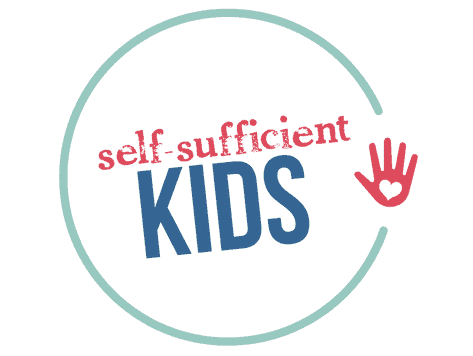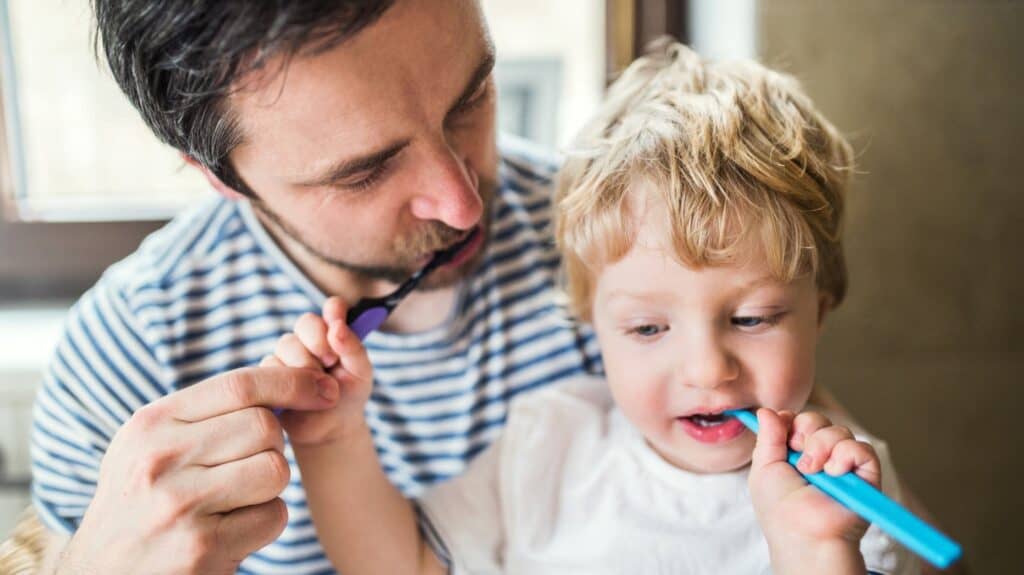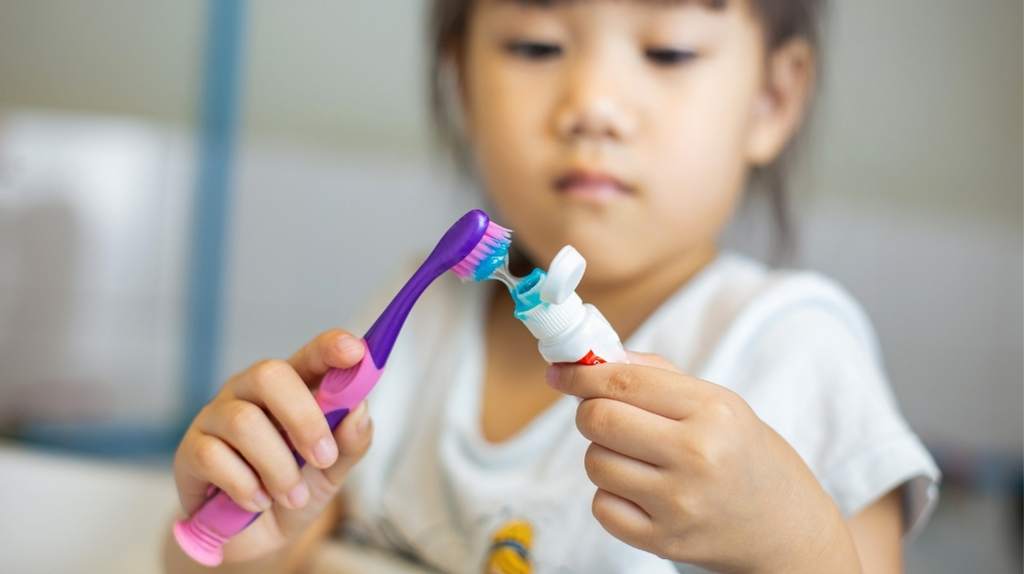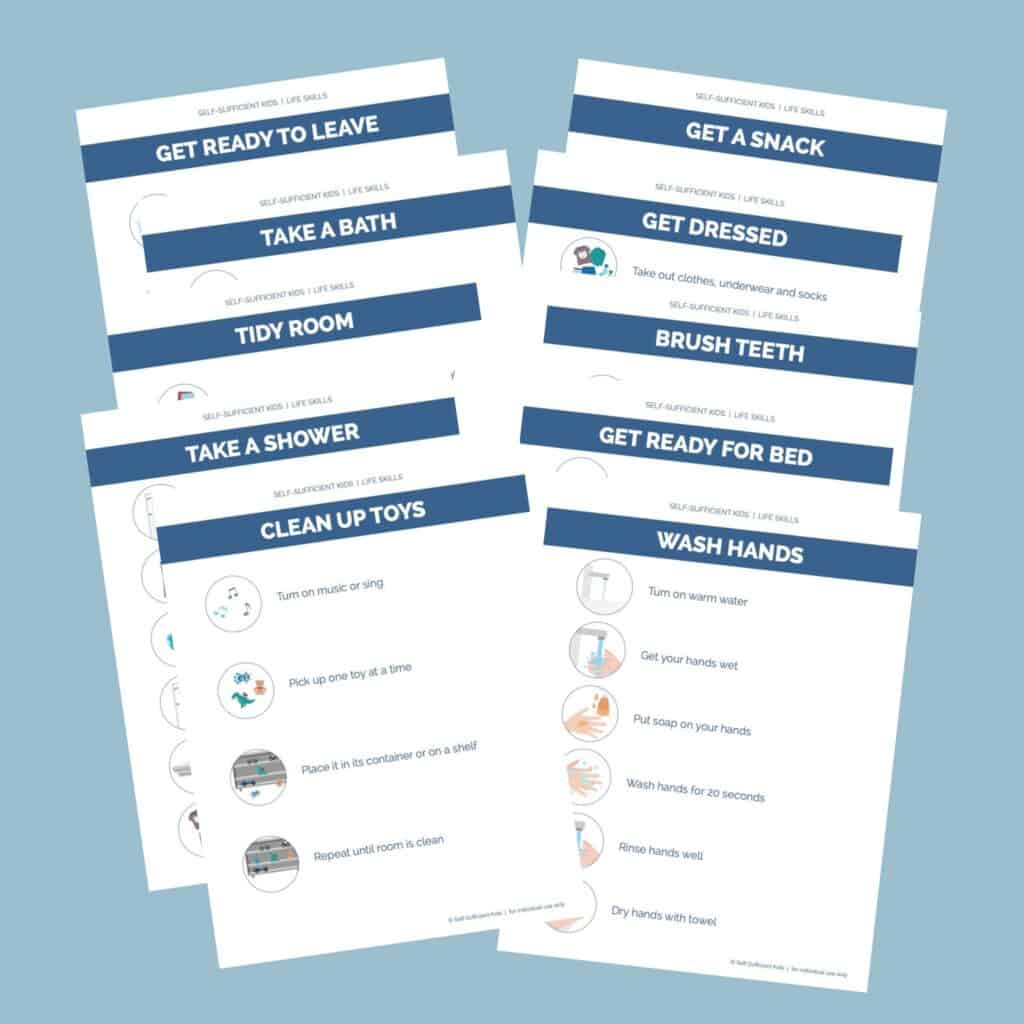How to Get Your Child to Enjoy Brushing Their Teeth
Brushing teeth is one of the very first life skills our kids learn. And while some children take to this task immediately, others are more resistant. Here are a few tips for how to ease the transition and make this healthy habit commonplace.
If getting your child to brush their teeth feels more like a chore than an ordinary part of your daily routine, just know that it’s not unusual for a new milestone to bring a transition period of struggles.
There could be a number of reasons why your child is resisting brushing their teeth. Maybe they’re anxious about the idea of brushing because they don’t know what to expect. Or maybe the sensory stimuli of brushing is overwhelming – as it is for many young kids.
Or, perhaps, your child simply doesn’t want to be bothered with this boring task when there are so many other fun things to do.
Since brushing teeth isn’t something we can easily set aside – it’s something our kids must do – it’s important to find a way to encourage your child to brush their teeth.
The following advice and steps can help:
At what age should I start brushing my child’s teeth?
You can start brushing your child’s teeth as soon as their first tooth (or teeth – yes we know your teething struggles) pokes through.
The American Dental Association recommends you brush two times a day using an infant-sized toothbrush that’s moistened with water with a smear of fluoride toothpaste the size of a grain of rice. This can be done up until age three. After that, your child can use a pea-sized amount of fluoride toothpaste for brushing.
It’s important to introduce tooth brushing at an early age because it normalizes the whole process. And the more normal this brushing routine becomes for them, the easier it will be.
When can kids start brushing their teeth independently?
Kids can start learning how to brush their own teeth at around 3 years old. By age 4, they should be able to brush their teeth independently twice a day with parental supervision to check that they’re cleaning them properly.
Your child should no longer need supervision at about 8 years old. But of course, the age that a child can independently brush their teeth can vary depending on their needs, maturity, and rate of development.
What are the 5 steps to brushing your teeth?
If you want to teach your child how to brush their teeth properly, but are in need of a good resource, here are 5 easy steps for brushing that you can teach your child:
- Run the toothbrush under water.
- Put a small (pea-sized) amount of toothpaste on the toothbrush.
- Brush the top and bottom teeth for 2 minutes.
Tip: Have your child hold their toothbrush at a 45-degree angle towards the gums of their upper and lower teeth. Move the brush in gentle circles to clean the outer surfaces and gums. Then the inner and chewing surfaces of the teeth. Don’t forget to brush the tongue to remove bacteria! Then finally, encourage them to spit out the toothpaste.
- Rinse toothbrush.
- Put the toothbrush and toothpaste away.
Help guide your young child through everyday tasks with these Simple Directions for Young Children Cards. Each card serves as a reminder of how to carry out a task and allows children to eventually take on tasks independently. Click here to learn more.
How can I get my child to enjoy brushing their teeth?
Getting your child to brush and floss doesn’t have to feel like pulling teeth – especially when practicing healthy dental habits becomes something they genuinely enjoy!
But how do we get there? Here are some essential tips for getting young children to brush their pearly whites without a fuss.
Familiarity with brushing is key
Introducing new activities, especially if there’s a lot of sensory stimuli involved, can stir up anxiety in some kids. Little kids don’t know what to expect when it comes to brushing their teeth, so the more second nature it becomes, the easier it will be for your child to accept brushing into their daily routine.
Start by introducing the concept of brushing before they start doing it themselves. Teaching them about brushing through playtime, reading books, watching videos, or even going to the dentist can help prepare your child so it’s not so foreign or intimidating.
You could also try introducing the concept of brushing teeth through activities they enjoy. Whether it’s brushing their stuffed animal or baby doll’s teeth, role-playing and letting your child brush your teeth, or simply discussing the delicious flavor of the new toothpaste you purchased – creating consistent and positive associations with brushing will make it a familiar aspect of their everyday life.
Model the behavior
Children are like sponges and they absorb everything around them – especially everything you do, which means you have the power to influence your child the most.
Set a good example by practicing good dental hygiene while they watch. When it’s time for them to brush their teeth, you can brush yours with them. Better yet, make brushing time something the whole family can do together! If your child sees everyone happily brushing their teeth, they’ll want to join in on the fun.
Another way to model the behavior is to take turns brushing each other’s teeth or demonstrate how and have them mirror you. The more your child sees you brushing your teeth, the more they’ll be willing to do it. Monkey see monkey do!
Make it fun
This may be a no-brainer, but as busy parents, it’s easy to want to fly through tasks quickly rather than effectively. But when we make the brushing process fun, it actually becomes so much easier.
Make brushing a fun routine for your child by making silly noises, using a flashlight to check for “plaque bugs,” or singing the same toothbrushing song every day. You can also get their favorite characters involved by getting a toothbrush with their favorite princess on it or bringing a stuffed animal with them into the bathroom for encouragement.
Give your child choices
Giving your child choices when brushing their teeth will give the illusion that they’re the ones in control. Not only does it help with cooperation, but it also encourages them to have ownership over their choices.
To do this, provide your child with two or three options and ask them to choose one. Whether it’s choosing between a green or purple toothbrush, strawberry or melon flavored toothpaste, or what song they want to play while they brush, you’ll get them to do what you want while they choose how it’s done. It’s a win-win!
What if my child refuses to brush their teeth?
If you’ve tried all these tips, but your child still refuses to brush their teeth, you’ll first want to figure out what’s causing their reluctance.
To find this out, ask them (when they’re in a good mood!) why they don’t like brushing their teeth. Once you know why you can move forward from there.
Your child may not want to brush their teeth for several reasons:
- Sensitive teeth: If you find your child has sensitive teeth, try using a softer bristle toothbrush or toothpaste designed for sensitive teeth.
- Dislike toothpaste taste/texture: Experiment with different toothpaste flavors until you’ve found one that your child enjoys. You can also just use plain water until you slowly ease back into using toothpaste.
- Find the task tedious: Mentally prepare them for what’s coming by reminding them every few minutes how much play time is left before it’s time to brush. This lowers the chances of protest as they won’t be surprised by the sudden request, and it will feel fairer.
- Not important to them: Boost motivation by respectfully stating that you can move on to a more enjoyable activity, like reading books or playing an imaginary game, just as soon as they brush their teeth. for boosting motivation.
Every step of your child’s development has its fair share of challenges. That is why it’s so important to communicate these new responsibilities in the most effective way possible to avoid any power struggles – and when it comes to kids, simplicity is key!
See related:
“I can do it myself!” – How to Parent (and Survive) the Independent Toddler Stage
9 Ways to Encourage Self-Sufficiency in Young Kids
10 Parenting Practices That Pay Big Dividends When Kids Are Older
What to do next…
1. Subscribe to Self-Sufficient Kids’ email list.
Like what you read here and want to learn more? Every Thursday I’ll send you one parenting tip about raising self-sufficient kids and creating the peaceful relationship you yearn to have with your child. Click here to sign up.
2. Take one of my quizzes!
Find out if you’re raising a self-sufficient kid (click here) or if you’re doing too much for your kids (click here). At the end of each quiz, you’ll be asked to provide your email address to see the results.
3. Get your kids started on chores.
Learn how to get your child started on chores (& keep them motivated + avoid power struggles) by enrolling in my Get Your Kids Successfully Started on Chores course. Click here to learn more and sign up.

About Kerry Flatley
Hi! I’m Kerry, the mother of two girls and a certified parent educator. I believe it is possible for parents to have a supportive, loving, and warm relationship with their kids while raising them to be independent and ultimately self-sufficient. Over the years, I’ve read numerous books and articles that support this belief and I’ve put these ideas into practice with my own kids. Read more about me and Self-Sufficient Kids here.




